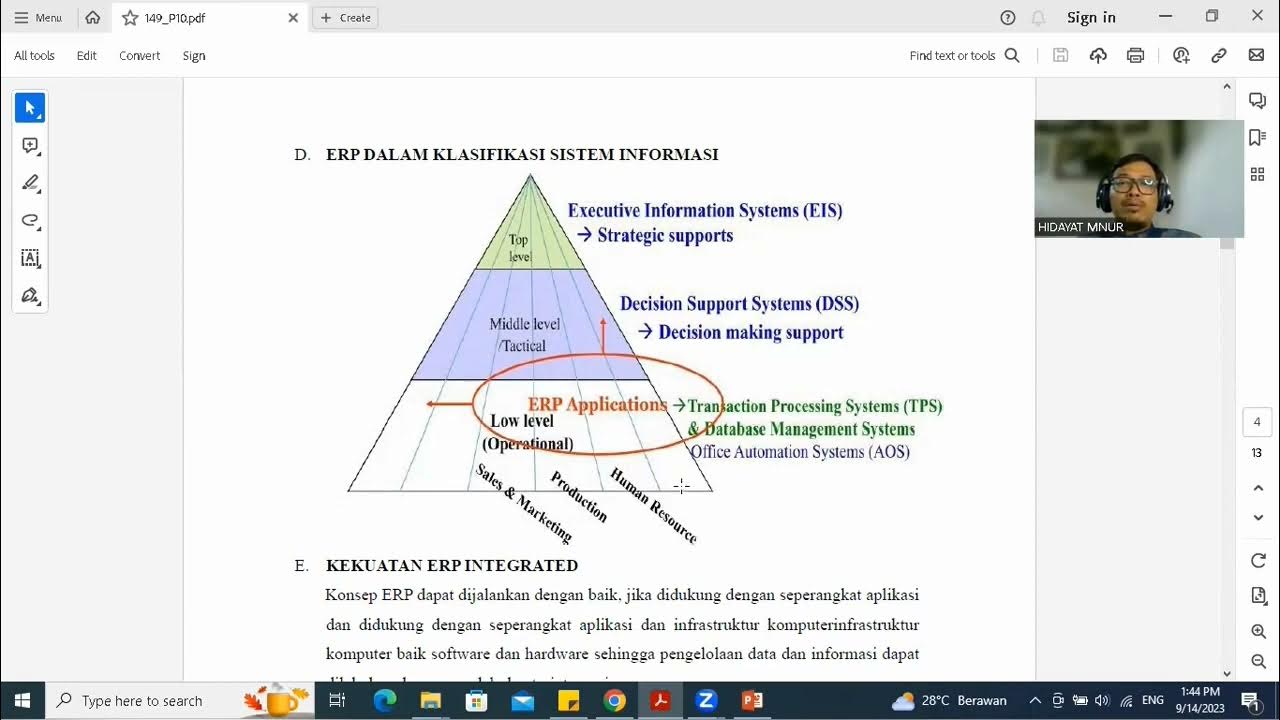Group Technology | Industrial Automation
Summary
TLDRIn this lecture, the focus is on multi-station cells with variable routing in manufacturing systems, alongside the concept of group technology. Group technology aims to group similar parts based on design or production processes, enhancing efficiency. Three methods for forming part families are discussed: intuitive grouping, classification and coding, and production flow analysis. The lecture highlights the advantages of cellular manufacturing, including reduced lead time, easier maintenance, and increased worker satisfaction. Additionally, the video touches on flexible manufacturing systems (FMS), which utilize fully integrated automatic handling in machine cells for further optimization.
Takeaways
- 😀 Group technology is a manufacturing philosophy where parts with similar design and production processes are grouped together to optimize production time and resources.
- 😀 There are three types of manufacturing systems: single station cells, automated lines with fixed routing, and multi-station cells with variable routing.
- 😀 Cellular manufacturing involves organizing machines into cells that specialize in manufacturing parts belonging to a specific family, improving production efficiency.
- 😀 Part families are groups of parts with similarities in design (geometric shape) or processing steps, which helps in streamlining manufacturing processes.
- 😀 Grouping parts into families helps reduce manufacturing lead time, work in progress, and setup time, and also lowers material handling costs.
- 😀 The key to implementing cellular manufacturing is identifying part families, which can be challenging but is essential for optimizing production.
- 😀 There are three methods for generating part families: intuitive grouping, classification and coding, and production flow analysis (PFA).
- 😀 Intuitive grouping relies on the expertise of technical personnel to group parts based on design and manufacturing attributes, without formal documentation.
- 😀 Classification and coding assign numeric codes to parts based on their design and manufacturing attributes, facilitating easy retrieval and planning.
- 😀 Production flow analysis helps group parts into families based on the similarity of their production routes, which directly aids in designing machine cells.
- 😀 Cellular manufacturing can involve single or multiple machines in each cell, and depending on the complexity, may include manual, semi-integrated, or fully integrated handling systems.
Q & A
What are the three types of manufacturing systems discussed in the lecture?
-The three types of manufacturing systems discussed are: 1) Single station cells, 2) Automated lines (or multi-station cells with fixed routing), and 3) Multi-station cells with variable routing.
What is the primary benefit of using group technology in manufacturing?
-The primary benefit of group technology is to group similar parts together based on design or manufacturing process similarities, which helps reduce processing time, routing time, and resource usage.
What is a 'part family' in the context of group technology?
-A part family is a collection of parts that share similarities in design (geometric shape) or manufacturing processes. These parts are grouped together to optimize production efficiency.
What is the role of 'cellular manufacturing' in improving production efficiency?
-Cellular manufacturing involves grouping machines into cells that specialize in producing specific part families. This setup reduces material handling, minimizes work-in-progress, and decreases manufacturing lead times.
What are the three methods used to identify part families in group technology?
-The three methods to identify part families are: 1) Intuitive grouping (visual inspection), 2) Classification and coding, and 3) Production flow analysis.
How does intuitive grouping work in identifying part families?
-Intuitive grouping relies on the experience of technical personnel who visually inspect parts and group them based on design or manufacturing attributes. This method is simple but often used in industries due to its practical approach.
What is the difference between intuitive grouping and classification and coding in part family generation?
-Intuitive grouping relies on the experience of personnel to visually inspect and group parts, while classification and coding involves assigning numeric codes to design and manufacturing attributes of parts, which helps systematically identify and retrieve similar parts.
What is 'production flow analysis' (PFA) and how is it used to group parts?
-Production flow analysis groups parts based on the sequence of operations they go through in the manufacturing process. Similar parts with similar operation sequences are grouped together, which aids in designing machine cells for efficient production.
What is a Flexible Manufacturing System (FMS), and how does it relate to cellular manufacturing?
-A Flexible Manufacturing System (FMS) is an advanced form of cellular manufacturing that uses fully integrated automatic handling systems. It allows for maximum flexibility in production with minimal manual intervention, making it ideal for industries with varying product demands.
What are the main advantages of grouping machines into cells in cellular manufacturing?
-The main advantages of grouping machines into cells include reduced manufacturing lead times, lower work-in-progress inventory, improved worker satisfaction due to reduced material handling, and easier maintenance and standardization of tools and fixtures.
Outlines

This section is available to paid users only. Please upgrade to access this part.
Upgrade NowMindmap

This section is available to paid users only. Please upgrade to access this part.
Upgrade NowKeywords

This section is available to paid users only. Please upgrade to access this part.
Upgrade NowHighlights

This section is available to paid users only. Please upgrade to access this part.
Upgrade NowTranscripts

This section is available to paid users only. Please upgrade to access this part.
Upgrade Now5.0 / 5 (0 votes)





